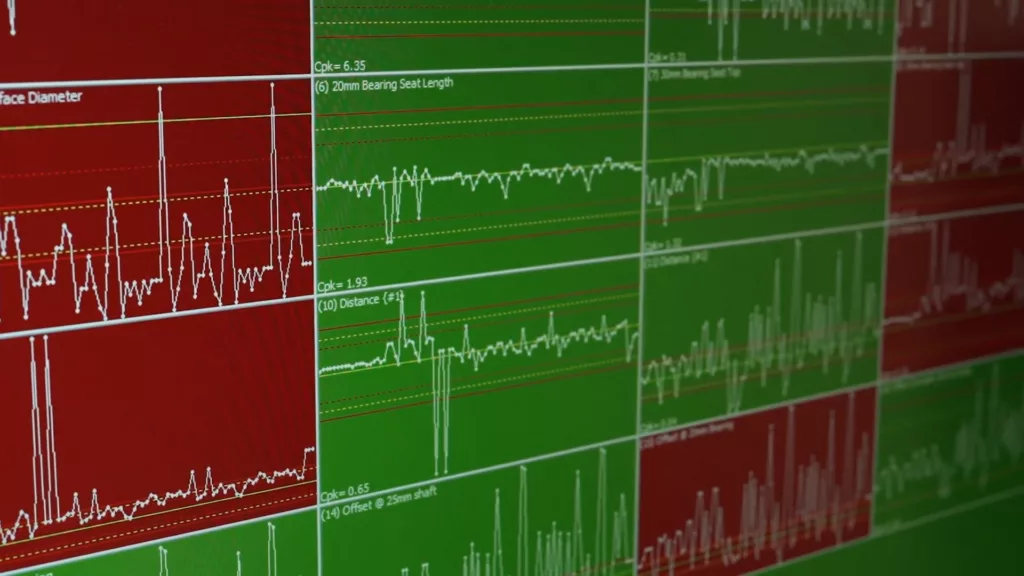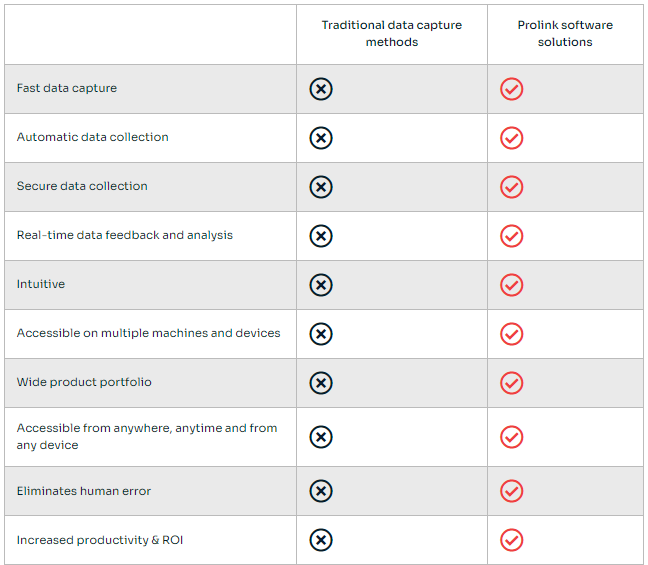In the world of manufacturing, data has always played a crucial role in gauging shopfloor performance and production activity. However, despite technological advancements, many manufacturers still cling to outdated data collection methods, relying on manual processes that are rife with limitations. As powerful monitoring and analytical tools become increasingly more accessible, the era of manual data capture is rapidly fading and being replaced by modern automated solutions, such as Prolink.
Prolink software solutions offer a comprehensive range of automated software solutions for data collection and quality analysis, seamlessly integrating with the largest variety of shopfloor machines and devices in the world. Prolink’s commitment to innovation empowers manufacturers to achieve peak performance and exceptional product quality.

What are the main limitations for traditional data capture methods?
Traditional data capture methods such as manual data collection using Excel spreadsheets, clipboards, paper documents, and stopwatches, has long been a staple of manufacturing operations. However, this traditional method is outdated and inefficient, hindering real-time decision-making and process improvement. These methods are prone to errors, time-consuming, and labour-intensive, diverting valuable resources from the production floor.
Reduced productivity
The reliance on manual data collection creates a significant barrier to enhanced productivity. Its limited speed and limited real-time responsiveness, leads to delays in capturing vital information and hinders productive decision-making. This leaves critical gaps in information flow, impeding the ability to react quickly to changing operational conditions, address issues and prevent downtime, disrupting workflow and negatively impacting overall productivity.
Poor decision-making
The absence of reliable, real-time data from automated data reporting systems injects significant uncertainty into decision-making processes. Relying on manual data collection makes manufacturers susceptible to erroneous data and conclusions. This hinders informed, data-driven decision-making which diverts resources, delays effective interventions, and ultimately compromises operational excellence.
Human error
The reliance on manual data collection in manufacturing poses a significant vulnerability of human error. Simple errors like transposed numbers and illegible handwriting to complex inconsistencies in interpretation or inconsistent data recording across shifts, accelerates the potential for inaccuracy. This leads to unreliable information, flawed interventions, and reduced efficiency on the shopfloor.
Limited visibility
The inherent limitations of manual data collection significantly restricts the visibility for shopfloor operators. The time wasted searching for relevant information directly translates to delayed responses and lower productivity. Manual data collection methods lack the ability to seamlessly switch between individual and specific machine data and wider shopfloor reports, impeding data-driven problem-solving and decision-making.
Unstructured data and lack of trends
Manual data collection provides unstructured data insights, often hindering true comprehension of a shopfloor’s activities. The lack of standardised data formats and historical trends prevents any deeper analysis of the data. The absence of discernible trends blocks operators and senior management’s ability to solve shopfloor problems, leading to reactive measures instead of proactive interventions.
Incorrect identification of root causes
The reliance on manual data collection significantly hinders the accurate identification and analysis of root causes. Factors including human error, inconsistencies and time pressures distort the picture of operational reality, leading to misidentified root causes and misguided interventions.
Inaccurate information
Manual data collection is constantly susceptible to human error, from simple typos and misreadings to inconsistencies in interpretation. All of this results in inaccurate information becoming a source of operational data, corrupting purchasing decisions, inventory management, and production schedules, resulting in inaccurate parts orders, inefficient resource allocation, unreliable delivery times, and increased operational costs.
At a glance: Traditional Data Capture vs. Prolink Software Solutions


